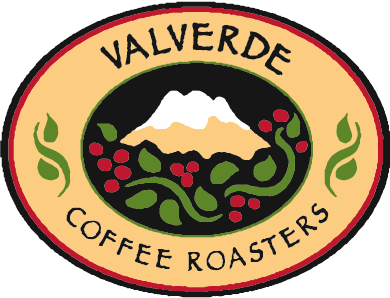About Bolivian Coffee
 Lots of people ask us if we've seen the Travel Channel's episode featuring Bolivia in its show about coffee, Dangerous Grounds. We're glad to have help getting the word out about Bolivian coffee -- finding the best coffee in Bolivia and sharing it with the rest of the world is what Invalsa is all about! Here's a short version of the story of Bolivian coffee for you.
Lots of people ask us if we've seen the Travel Channel's episode featuring Bolivia in its show about coffee, Dangerous Grounds. We're glad to have help getting the word out about Bolivian coffee -- finding the best coffee in Bolivia and sharing it with the rest of the world is what Invalsa is all about! Here's a short version of the story of Bolivian coffee for you.
Bolivia is the poorest country in Latin America, and is land-locked in the middle of South America. The west of the country, where the capital city, La Paz, and also the coffee growing region is located, is very mountainous, containing the highest peaks of the Andes Mountains, which run all the way along the entire continent of South America.
The population in western Bolivia is majority native South American people, with the most common languages and ethnic groups being the Quechua (the language of the Inca Empire) and the Aymara.
Most of the coffee farmers that Invalsa works with are Aymara Bolivians who moved during the 1980s and '90s from the very high, desert-like areas (Altiplano) around La Paz, to the more tropical Caranavi area, which is about five hours’ drive north of La Paz. The Caranavi province is where 90% of Bolivian coffee is grown. In order to get from La Paz to Caranavi, you have to drive on the “Most Dangerous Road in the World”, which is indeed extremely dangerous, although scenic. Invalsa staff drive to and from Caranavi on this road many times almost every week, especially during coffee season.

Bolivia has excellent regions for growing coffee because it is both tropical (hot and humid), which is necessary because coffee is a tropical jungle tree, and also has very high altitudes. The higher the altitude, the longer the coffee bean takes to ripen and develop and the more pronounced its flavors will be after it is harvested.
Bolivia produces a very, very small amount of coffee compared to other Latin American countries such as Brazil, Colombia, Costa Rica, and Guatemala. The specialty coffee industry began to develop in the 1990s and 2000s when foreign aid-funded development programs built coffee washing mills, and lead training programs for farmers on how to harvest and dry coffee properly in order to select only good beans, prevent fermentation and maintain quality. The highlight of these coffee training programs were the Cup of Excellence (COE) competitions in Bolivia, which took place in 2004 – 2009. This prestigious program both trained farmers in quality control techniques, and brought international coffee judges to select the best Bolivian coffees every year. Jorge Valverde was the Coordinator of the Bolivia COE programs from 2007 – 2009.
Unfortunately, the Bolivia COE program was cancelled after the 2009 competition because the national Bolivian government is very anti-American, and did not want the US Agency for International Development (USAID) to fund any more development programs in Bolivia, and there was no other source of money to fund the COE program.
Invalsa is now one of the few coffee buyers in Bolivia that emphasizes stringent quality control and high cupping standards. The effort to maintain and improve coffee quality is difficult in Bolivia for several reasons:
- Since it produces such a small amount of coffee, Bolivia is not a well-known coffee origin, and even specialty coffee roasters who are used to paying high prices for high-quality coffees may not be familiar, or interested in trying Bolivian coffees. This creates an unfortunate cycle, because in order to invest the time and money to produce high-quality coffee, farmers need to be paid more than they would be paid for commercial quality coffee; but in order to be paid more there need to be enough customers willing to pay high prices for high quality Bolivian coffee.
- Bolivia is a very poor country, so the coffee farmers that we work with do not have the money to invest in machinery, such as coffee processing equipment, or education, such as training seminars, that would help them to produce better quality coffee more easily. It is generally up to development aid programs, agricultural cooperatives, and coffee companies such as Invalsa, to figure out where to get the money and trainings necessary to help farmers to improve their coffee production.
Invalsa does not grow any coffee ourselves in Bolivia. We buy coffee directly from individual farmers and cooperatives. To generalize, these farmers are poor, but entrepreneurial native Bolivians, who have moved to the Caranavi region and been given allotments of 10 hectares (about 22 acres) of tropical land to farm from the government. Usually only 2-4 hectares of their land are planted with coffee trees, while the rest remains uncultivated, wild forest. Invalsa has been building relationships with the farmers that we work with for several years, since 2005 when the company was founded. Most of the farmers we work with are in communities called San Ignacio, Siete Estrellas (Seven Stars), Cima del Jaguar (Jaguar’s Peak), and Finca Golondrina (Sparrow Farm). Below, Cristina poses with Andrea Hilari, of Siete Estrellas, and Andrea shows off one of her coffee trees during a visit in October 2012.


Learn more About Coffee here!
